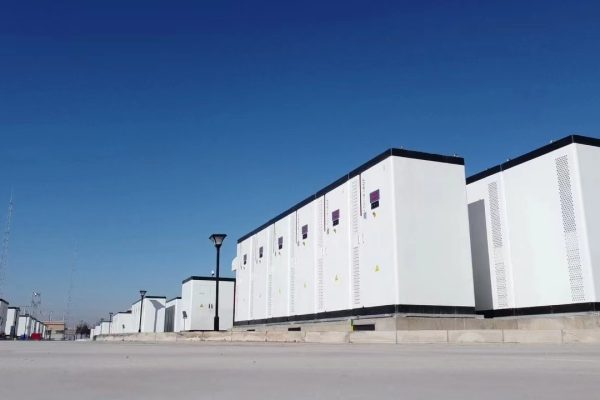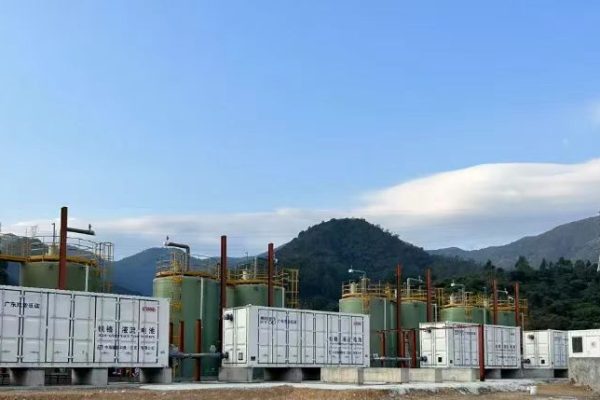As commercial and industrial (C&I) energy storage systems (ESS) scale up in capacity — often exceeding hundreds of kilowatt-hours — fire protection has become one of the most critical design and compliance factors.
While modern lithium-ion batteries are efficient and long-lasting, they also store significant energy in a compact space. Without proper fire safety design, a small fault can quickly escalate into a catastrophic event.
This article explains the fire protection standards, design best practices, and international codes relevant to commercial ESS projects — helping buyers, integrators, and EPCs build safer systems and communicate compliance with confidence.
1. Why Fire Protection Matters in Energy Storage Systems
Large-scale ESS installations, especially those above 100 kWh, carry inherent risks:
- High energy density (chemical + electrical)
- Concentrated heat generation during faults
- Tight enclosure spaces (less airflow)
- Potential for thermal runaway propagation
Fire incidents in early storage projects worldwide led to stricter industry standards.
Today, fire safety design is not optional — it’s a core technical and regulatory requirement.
🔥 A compliant ESS is not only about performance; it’s about protecting people, property, and brand reputation.
2. Key Fire Protection Standards for ESS
Depending on your export region, several international and regional standards apply to commercial battery systems:
| Standard | Region | Focus |
|---|---|---|
| UL 9540 | USA | Safety of Energy Storage Systems |
| UL 9540A | USA | Fire propagation and thermal runaway test method |
| NFPA 855 | USA | Installation of stationary ESS (building code) |
| IEC 62619 | Global | Safety requirements for lithium-ion batteries (industrial use) |
| IEC 62933 | Global | Safety and environmental considerations for grid energy storage |
| GB/T 36276 | China | General specification for electrochemical ESS |
| VDE-AR-E 2510-50 | EU (Germany) | ESS safety and installation standards |
⚙️ For international trade, UL 9540 and IEC 62619 certification are now baseline expectations for commercial systems.
3. Understanding UL 9540 and UL 9540A
UL 9540 evaluates complete ESS units — batteries, inverters, and control systems — under normal and abnormal conditions.
UL 9540A, on the other hand, is not a “pass/fail” standard but a test method that determines how fire propagates between battery cells, modules, and enclosures.
UL 9540A Test Levels:
- Cell Level: Thermal runaway initiation
- Module Level: Propagation between cells
- Unit Level: Heat, gas, and flame behavior
- Installation Level: Impact on building structures
🧪 A system that passes UL 9540A testing demonstrates controlled propagation — critical for indoor or containerized ESS.
4. NFPA 855 — Fire Code for Installation
The National Fire Protection Association (NFPA) established NFPA 855 to standardize safe installation of stationary ESS in buildings and facilities.
NFPA 855 Covers:
- Battery chemistries and hazard classification
- Separation distances between systems
- Fire detection and suppression requirements
- Ventilation and exhaust systems
- Emergency shutdown and signage
NFPA 855 directly references UL 9540 and UL 9540A — meaning compliant systems automatically meet part of the code requirements.
🏢 Following NFPA 855 ensures your ESS can pass fire department and insurance inspections in North America.
5. IEC 62619 and Global Equivalents
Outside the U.S., IEC 62619 serves as the international benchmark for lithium-ion battery safety.
It includes testing for:
- Overcharge, short-circuit, and crush resistance
- Thermal abuse and vibration
- Insulation and venting design
When combined with IEC 62933 (system-level) and IEC 61427 (performance testing), it forms a comprehensive safety framework for global exports.
🌍 For Europe, the Middle East, and Asia-Pacific, IEC compliance is typically required for import approval.
6. Fire Suppression Methods in ESS Design
Modern commercial storage systems integrate multi-layered fire protection strategies, typically including:
🔸 1. Early Fire Detection
- Temperature sensors at cell/module level
- Smoke or gas (CO, HF) sensors
- BMS-integrated alarms
🔸 2. Fire Suppression Systems
- Aerosol fire extinguishers (potassium-based)
- Clean agent systems (e.g., Novec™ 1230, FM-200)
- Inert gas systems (N₂, CO₂)
- Water mist systems for large containerized ESS
🔸 3. Venting & Pressure Relief
- Controlled exhaust vents for gases (H₂, CO)
- Explosion-proof panels for pressure release
🔸 4. Thermal Isolation
- Fire-resistant materials between modules
- Heat barriers and airflow channels
🚒 The best approach is layered — detect early, isolate fast, and suppress effectively.
7. Fire Safety in Containerized ESS
Containerized ESS (20ft or 40ft units) are popular for C&I and utility-scale projects.
However, enclosed metal structures create unique fire safety challenges.
Design Recommendations:
- Separate battery room and inverter room
- Install dedicated ventilation fans and smoke extraction ducts
- Integrate gas sensors and emergency stop switches
- Add aerosol or gas-based extinguishing systems inside compartments
- Provide external fire access ports for first responders
📦 Containerized ESS should always pass UL 9540A or equivalent large-scale fire tests before deployment.
8. Role of BMS and EMS in Fire Prevention
The Battery Management System (BMS) and Energy Management System (EMS) are the digital guardians of fire safety.
BMS Functions:
- Continuous cell voltage and temperature monitoring
- Early fault isolation (disconnect of strings)
- Communication with inverter and EMS for system shutdown
EMS Functions:
- Supervises environmental data (room temperature, humidity)
- Coordinates alarms with the site monitoring platform
- Logs abnormal conditions for predictive maintenance
🧠 Smart fire prevention starts with smart data — early detection avoids physical incidents.
9. Installation Best Practices for Fire Safety
| Design Area | Recommendation |
|---|---|
| Separation Distance | ≥ 1.2 m between cabinets (per NFPA 855) |
| Ventilation | Natural or forced, 6 air changes/hour minimum |
| Fire Rating | Enclosures rated for 1-hour fire resistance |
| Cable Management | Use flame-retardant insulation (IEC 60332-3) |
| Signage | “ESS – Battery System” with hazard class label |
| Maintenance | Quarterly inspection of sensors and extinguishers |
🧯 A well-designed layout reduces both risk and insurance costs.
10. Regional Regulations Snapshot
| Region | Regulatory Focus | Notable Requirement |
|---|---|---|
| U.S. | UL 9540, NFPA 855 | Fire Marshal approval required |
| EU | IEC 62619, EN 50272 | CE + system-level testing |
| China | GB/T 36276, GB 51348 | Battery room layout standards |
| Australia | AS/NZS 5139 | Distance from buildings & ventilation rules |
| Middle East | IEC alignment | Fire Department sign-off mandatory |
🌐 Always confirm local authority (AHJ) requirements before shipment or installation.
11. Insurance and Certification Benefits
Buyers often underestimate how much insurance companies rely on certification.
Projects with UL 9540-certified ESS receive:
- Lower insurance premiums
- Faster permit approvals
- Higher customer confidence
💡 Compliance is not just about safety — it’s a business advantage.
12. The Future of ESS Fire Protection
Emerging trends are making ESS safer and smarter:
- AI-based thermal monitoring for real-time fault prediction
- Non-flammable electrolytes in next-gen lithium cells
- Solid-state battery systems with inherent fire resistance
- Digital twins for fire simulation and design validation
🔋 As energy storage grows, so does the sophistication of fire safety engineering.
Fire protection is a defining factor in the success and acceptance of commercial energy storage systems.
By aligning with international standards like UL 9540, UL 9540A, NFPA 855, and IEC 62619, suppliers and EPCs can deliver not just efficient systems — but safe, insurable, and compliant ones.
✅ Key Takeaways:
- Always select certified battery modules and inverters.
- Design with early detection and suppression in mind.
- Follow spacing, ventilation, and access guidelines.
- Verify compliance with local fire codes before installation.
In today’s market, safety equals trust — and trust builds long-term partnerships.









